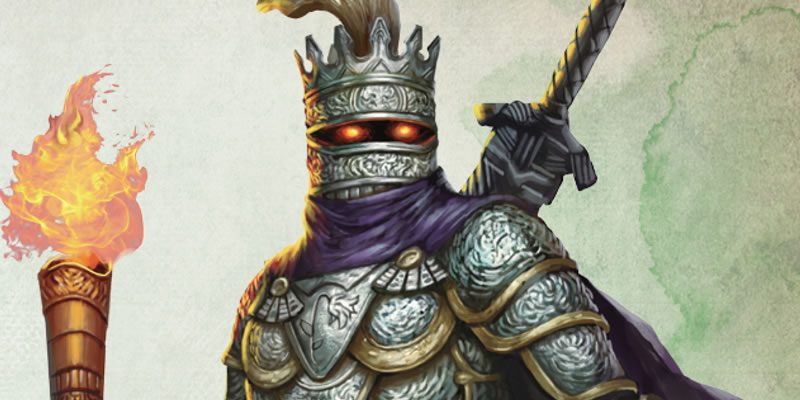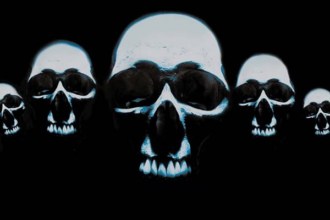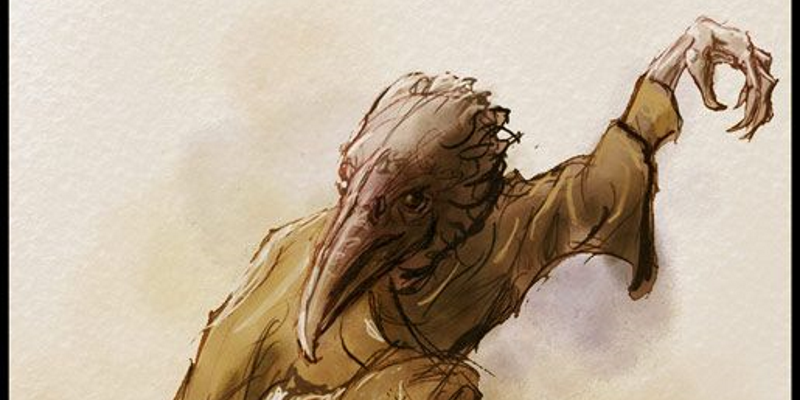Adventure Building: Part 2 – Creating a Threat

Part 1 | Part 2 | Part 3 | Part 4 | Part 5
In the first article in this series I looked at what you should consider when getting started creating your own adventure. This second article in this series continues the adventure building by looking at establishing a threat. An adventure needs a threat for the heroes to discover and ultimately stop. As your heroes kick down doors, escape deadly traps, investigate clues and kill monsters… a villain should be the one responsible for the obstacles that emerge as a result of the villain pursuing his own evil scheme.
What is the threat that your players must defeat?
Here is a list of potential threats:
| d8 | Threats |
|---|---|
| 1 | an evil cult or shadow organization (e.g. Cult of the Dragon) |
| 2 | a monster that is terrorizing the people in a village (e.g. Werewolf, Jaws) |
| 3 | a villain with lieutenants and underlings |
| 4 | a force that is consuming everything in its path (e.g. The Nothing (Never Ending Story), Galactus) |
| 5 | someone close to the PCs that they trust who is acting against the PCs |
| 6 | a respected and trusted individual in a position of power who is living a double life (Chancellor Palpatine) |
| 7 | a recurring villain who they have met in the past |
| 8 | a monster unleashed by the PCs |
While it is important to figure out who or what the threat is, this is less important than figuring out the why. Your threat should be set up in opposition to the goals of your players’ PCs. If the PCs want to defend a town, solve a mystery, find a treasure or discover a powerful magic relic… the villain should be actively preventing the PCs from attaining their goal (or at least making it difficult).
What are the Goals of the Villain?
Whatever threat you create for your heroes to defeat, make sure the villain pulling the strings has a clear goal (or goals) that is uncovered by the players. The goals of the villain will work best if they directly oppose the goals of the PCs.
Putting in effort when creating a villain will pay off as the players get closer to the final confrontation. For a longer adventure, the villain may be able to hide in the shadows and for shorter adventures you will need to have the scheme surface quickly. Whatever the villain is trying to accomplish, try to make it something the players will want to ultimately stop at all costs.
Pathfinder covers villains on pages 90-93 in its GameMastery Guide (check out the Villain’s Escape Kit). The D&D 5e Dungeon Master Guide provides some great rollable tables to generate villains on page 94-96. Let’s create a few villains and see if anything good is rolled…
| Goal (Objective & Scheme) | Method | Weakness |
|---|---|---|
| Wealth – Plunder ancient ruins | Murder – Assassination | The villain is weakened by the presence of a certain artifact |
| Passion – Raise or restore a dead loved one | Magical mayhem – Weather control | A hidden object holds the villain’s soul |
| Influence – Place a pawn in a position of power | Dueling | The villain loses its power if a mystic bargain it struck long ago is completed. |
What if the Villain’s Goals Do Not Oppose the Goals of the PCs
- By creating hooks tied into the backstories of your PCs, your threat and its goals should be something that they are invested in defeating.
- If the players really go another way… change the threat, come up with new goals for the villain, whatever. You should react to your players versus expecting them to discover your story.
How to do I Establish an Awesome Evil Villain?
I created three random villains above and I think the second one is the most interesting… a Lich Weathermaster who just wants his lady by his side as he plunges the world into an ice age. This sounds a little like Adventure Time‘s Ice King, but I’ll run with it. But this is just a shell of a villain and will need some work to really bring my lich to life. We’ll look at getting the players invested in defeating your threat using hooks later in part 3, but here are 6 things to help create a great villain:
1) MAKE THE VILLAIN MEMORABLE
Make sure that your villain has an original personality that your players will remember and love to hate. You can’t get away with a random PC named Bob. Come up with traits like only speaking in the third person, a crazy accent, a peg leg, a scar or weird breathing. Insult, taunt and foil the actions of your players and their PCs. Create a villain they love to hate.
2) LET THE PLAYERS GET TO KNOW THE VILLAIN
Facing a villain for the first time in the final showdown is not satisfying.
- If the villain is hiding in the shadows, have the PCs build a relationship with the villain’s alias. The betrayal or reveal will be super sweet for you and bitter for the players.
- If the villain is known, try creating non-combat encounters where he can’t be attacked due to the setting or other circumstances. I once had the PCs who were new in town, rush to tell the mayor about the discovery of an evil cult. They found themselves in front of the mayor and the cult leader they just battled. The cult leader was the trusted treasurer of the town and advisor. The PCs were quickly framed and turned into the bad guys.
- For early combat encounters, give the villain an escape route (or other complication) so she can survive until the finale.
3) SHOW THE PLAYERS HOW EVIL THE VILLAIN IS
Hearing that the villain killed a village of children is horrible, but the players will be more invested in the defeat of the villain if it hits home. Show them just how evil the villain is by destroying the PCs home village, killing their favorite village shopkeeper and murdering the PC’s boyfriend or girlfriend. The players will send their PCs running to defeat your villain.
4) MAKE THE VILLAIN FLAWED
Give your villain flaws and weaknesses.
- Create Major and Minor Character Flaws. A character flaw is a limitation, imperfection, phobia or deficiency that without would allow the villain to otherwise be very functional. The flaw can be a major flaw that really affects the character’s actions and abilities, such as a violent temper. The flaw can be minor flaw that is more of a simple weakness or personality defect, which affects the character’s motives and social interactions, but little else. Netflix’s Daredevil provides an excellent example of a villain with major (temper) and minor flaws (social).
- Make the Villain Overpowered (Provide a Secret Weakness). Have the PCs face the villain to be defeated easily and allowed to live (well most of them anyway). Finding the weakness of the omnipotent villain is a quest in itself now. Villains should be a real challenge for the PCs, but reward them for finding the weakness.
5) CREATE A VILLAIN THAT IS A FALLEN HERO
Maybe the villain used to be the hero. Give one of more of the PCs the chance to make the same dark choice, even better if they are manipulated into doing so by the villain. Anakin Skywalker is tempted by Darth Sideous to choose the dark side to save the one he loves. Luke Skywalker is given the same choice over 20 years later.
6) THE VILLAIN’S GOALS SHOULD MATCH OR CONFLICT WITH THE PCS
- If the PCs want peace for the kingdom, have the villain want peace too. Great villains often have similar goals as the PCs, they just have a very different idea of how to achieve those goals. Make sure this villain believes they are doing the right thing and the ends justify their means. For example, Professor X and Magneto both really want the same thing. Maybe the PCs even were allied with the villain, but the evil methods of the villain to reach their shared goals put them at odds.
- If the PCs want to selflessly quest to find a magic item to save the kingdom, have the villain selfishly want the item for themselves to become more powerful.
We’ll look at ‘Backstory, Setting, Hooks and More’ in the next article in this series.



